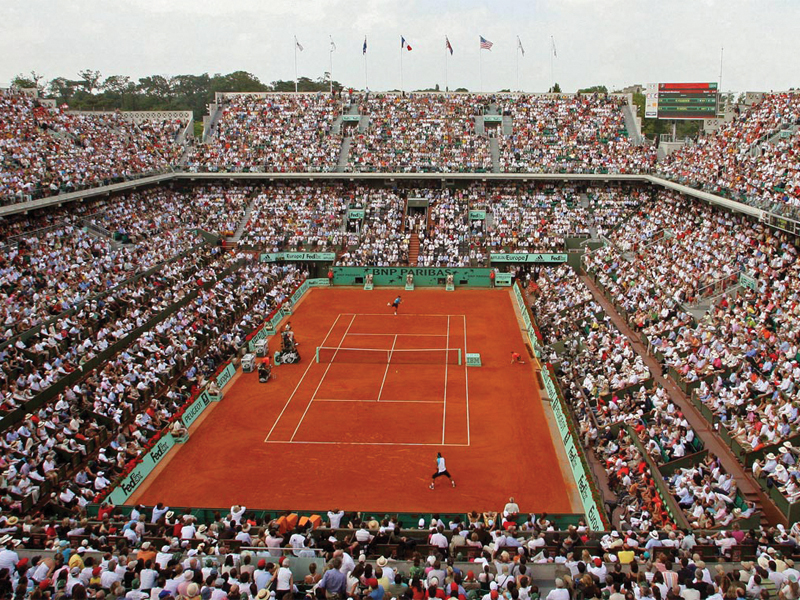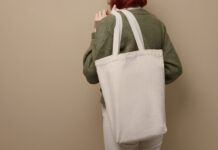The Ten Key Lessons Every Marketer Should Know
By Laurence Minsky and Colleen Fahey
Improving one’s brand identity is indeed one of the greatest challenges marketers have. It is for this reason that they’re constantly on the lookout for approaches on how they can capture the attention of customers without them being overfamiliar or overwhelmed. Looking at how the French Open created their audio brand and how they have managed it since its launch can help marketers improve the effectiveness of their overall branding efforts – even when they don’t have an audio brand.
Professional sporting events, like businesses, have a wide variety of audiences, stakeholders, touchpoints and channels, and are fighting to stand out and win the hearts and minds of their audiences. This holds true even when they have a unique and beloved product. Like business marketers, sports venues and events struggle in unifying all of their communications, so they convey the same personality across all of their touchpoints and platforms but with enough flex in their voices to meet the audience’s specific needs in a particular moment. And like businesses, they experience the common dilemma of keeping the brand fresh year after year while building the recognisability they can only achieve by the long-term consistent use of branding elements.
While internationally recognised as the world’s top clay court tennis championship with more than three billion viewers across the globe,1 the French Open tournament experienced all of these issues. And four years ago, they found a unique, powerful, and highly successful solution – one that can be instructive to all marketers, from consumer to business-to-business.
What was the solution? They developed an audio brand – a complete language of sound and music composed to deliver their vision, values and promise, just as marketers do with visual branding elements. And then they built that audio brand into key moments of the tournament experience and all its communications.
It sounds like common sense to create an audio brand, but sonic or sound branding is still rarely employed by marketers. As we pointed out in our book, Audio Branding: Using Sound to Build Your Brand, the first step is to recognise that people are more than just visually oriented – that your sound can reinforce the coherence – or incoherence – of your brand promise.2 And, while you might even recognise a few audio logos – Intel, SNCF, McDonald’s, MICHELIN, AXA, for instance, the audio logo is just the first step. A true audio branding system, just like a visual one, is a complete language that extends to all aspects of the sound.
Looking at how the French Open created their audio brand and how they have managed it since its launch can help marketers improve the effectiveness of their overall branding efforts – even when they don’t have an audio brand.
The initiative began in 2013 and quickly took root. To get started, the French Tennis Federation, along with its audio branding agency, Sixieme Son, looked at the world of tennis. They realised that the major tennis tournaments – the Australian Open, Wimbledon, and US Open – were all from English-speaking countries. The French Open was the only one located in a country with a Latin-based language. This insight inspired them to embrace every country that has a Latin-based language – infusing a wide range of Latin sounds and styles in the creation of their sound design.
[ms-protect-content id=”9932″]
Lesson one: When exploring your vision, values, essence, find the difference that makes your offering unique. Make sure the difference is something big enough, one that might even grow your audience. Then embrace it, use it, amplify it.
The French Tennis Federation and their audio branding firm also looked at the “behaviours” and actions associated with the brand and they realised that the side-to-side movements of tennis are similar to dance, another differentiator when compared to most other sports (although both football and basketball have also been compared to dance). They also considered the location of the games, Paris, France, and its timing, spring, both of which informed the final expression of the (audio) branding elements.
Lesson two: Does engaging with your brand require any unique behaviours, rituals or actions? If so, these can and should become a key consideration when informing the development of your branding foundation. And if your brand is place-based and/or time-based, these factors can and should inform it as well.
Finally, based on the fact that The French Open uses clay courts, unlike all of the other Grand Slam tournaments the collective team of client and agency felt that they should employ natural, organic sounds and stay away from the use of any synthesised instruments.
As a result of the considerations, the audio brand that was composed that included Latin dance rhythms. It featured the sound of the bandoneon, a musical instrument similar to an accordion, is popular in South American countries, particularly Argentina, and is obligatory for the tango.
While seemingly contradictory on the surface, their sound also needed to capture the monumental and even heroic nature of being one of the top four tennis tournaments. It needed to contain the values of tennis: surpassing yourself, passion and competition, as well as the heroism associated with tournaments in the dynamic and epic musical elements.
Lesson three: Did you incorporate key aspects of your product, service, and/or experience that you want to communicate into your branding program? The visual, the auditory, the olfactory, and even the tactile branding elements must all point to and reinforce the brand promise, so that your intended audiences can interpret it through all their senses.
Lesson four: Did you allow for tension in your input? We recommend finding it, because it can translate into producing greater audience interest with the final elements.
Developing the entire audio language, including the logo, required two focussed months and the talents of the entire 25-person Paris-based office of the French Open’s sound branding agency so it could be completed in time for use during the 2014 games. In addition to conducting the strategic development, brainstorming, audio mood board development, comprehension testing, and recording the final audio elements, Sixieme Son needed to leave enough time, of course, for client approvals and comments, so they could give their input along the way.
Looking at all of the possible audio touchpoints, from the stadium to broadcast to the Internet, they designed the audio brand to be effective in all of the formats as well as in the context of its various usages, before, during and after game. So, instead of just constructing a limited audio logo, they composed an entire audio vocabulary that was recognisable as a family, but flexible enough to work in the myriad delivery contexts and usage situations.
Finally, they had to test the (audio) brand elements at the touchpoints where they would live to ensure they conveyed the intended experience, an often-overlooked step in brand development – many firms go straight from the development to the implementation. For the French Open, this meant tests at the Roland-Garros stadium center court and Suzanne Lenglen court, ensuring that fans in the seats could hear and accurately interpret the brand building communication.
Lesson five: Make sure to leave enough development time, incorporate testing and make sure that everything aligns. Remember that anything is out-of-step with the core promise will lower the brand’s overall integrity. And, remember, that the brand development process takes longer and takes more work than it might initially seem.
The audio brand for the French Open was an immediate success, embraced by both the fans and athletes alike. As an example of the initial reception, the branded music timed to the clapping of a typical tennis audience was played during the awards ceremony as the champion, Rafael Nadal, walked up to accept his trophy, resulting in the longest standing ovation in the event’s history. Recalling it, Nadal, said, “To receive this trophy…with this incredible music, was a powerful and emotional moment for me.”3
Today, the audio brand for the French Open has become a key ingredient of the experience for attendees, players and viewers across the globe. The branded music plays while fans enter the stadium, when the athletes enter, when a match commences, and when a trophy is about to be given. And, of course, it is played at all media friendly events, reinforcing the brand as clips are played during news broadcasts.
As a result, all of the various audiences can recognise the French Open – and be reminded of their love for it – simply by its music.
But the audio brand also continues to evolve. For instance, separate musical playlists, all based in the branded voice, were created to enhance and underscore many of different contexts and environments of the overall experience. One playlist is played for athletes during the limousine ride to the stadium. And another is played in the Roland-Garros store for the fans shopping. All of the new playlists incorporate the DNA of the brand, so the compositions are undeniably from Roland-Garros.
Lesson six: Make sure you employ the appropriate branding elements at every touchpoint with every stakeholder, from advertising to PR and media events to physical place-based locations and beyond. For business-to-business marketers, that includes your internal meetings. Since your employees are the walking proponents of your brand, you want to give them a consistent view of it. If your sound is disjointed at your meetings, it will just as confusing to them as if you had changed the colour of your logo.
Lesson seven: Don’t rest on your laurels. While branding is a long-term investment, the brand elements need to be continually tweaked and expanded. Otherwise they will go out of date. If your branding elements are continually updated at a nearly imperceptible level, you will more likely be able to avoid ever needing a complete rebrand effort, which is a much more expensive endeavour.
Lesson Eight: Is your brand experience truly recognisable even when your logo has been removed? The days of the matching suite of luggage approach to branding is now over.4 You need to make sure people recognise the experience without mindless repetitiveness of the same elements, but with a system that seems fresh each time – yet harkens back to the core DNA of the brand, so the promise and essence are reinforced.
Even with all of their successes, the French Open remains the only one among the Grand Slam tennis tournaments to have its own audio brand. But since we are about to enter an era of the screen-less Internet, we believe that won’t remain that way for much longer. Just consider some recent advances with products like Alexa and Echo where, 50% of searches will soon take place without a screen5 and voice shopping will jump to approximately $40 billion by 2022 (up from $2 billion today).6 To be effective, voice searchable sites will need to use soundscapes, music and voice to distinguish themselves, as they now do with graphics, colours and typefaces. As a result, other tennis tournaments will surely soon follow the French Open’s lead.
Lesson nine: If you can become the first and “own” an area of branding, take it. And if you can remain the branding leader, even better. Roland-Garros Stadium is able to take more of their “fair share,” especially in media coverage when the broadcasters pick up their brand’s music and play it all over the world. Are you able to take more than your fair share based on the size of your business compared to your competitors?
Lesson ten: The strategic use of audio branding should be employed not just on sites but across all sound-enabled touchpoints including social media, events, customer service lines, ringtones, advertising and apps. And don’t forget to use the other sensory branding techniques of scenting for your environments and products as well as tactile and taste branding, when it is appropriate, for your products.
Just like areas of marketing, branding theory and practices continue to evolve. The ten lessons here should help marketers stay up-to-date with their efforts. Use them today if you want to stay in the game with your competitors.
[/ms-protect-content]
About the Authors
 Laurence Minsky is Associate Professor at Columbia College Chicago. He’s a co-author of The Activation Imperative: How to Build Brand and Business by Inspiring Action and Audio Branding: Using Sound to Build Your Brand, among other books.
Laurence Minsky is Associate Professor at Columbia College Chicago. He’s a co-author of The Activation Imperative: How to Build Brand and Business by Inspiring Action and Audio Branding: Using Sound to Build Your Brand, among other books.
 Colleen Fahey is U.S. Managing Director of Sixième Son, the world’s largest audio branding agency with clients spread across the globe, ranging from Huggies to Michelin, and a co-author of Audio Branding: Using Sound to Build Your Brand.
Colleen Fahey is U.S. Managing Director of Sixième Son, the world’s largest audio branding agency with clients spread across the globe, ranging from Huggies to Michelin, and a co-author of Audio Branding: Using Sound to Build Your Brand.
References
1. Minsky, L & & Fahey, C. (2017). Audio Branding: Using Sound to Build Your Brand, Kogan Page, London
2. Minsky, L & & Fahey, C. (2017). Audio Branding: Using Sound to Build Your Brand, Kogan Page, London
3. Sixieme Son. (2017). (online) The Music that Moved Nadal to Tears. https://www.sixiemeson.com/en/news/nadal-roland-garros-sports-musical-anthem/ Accessed: April 16, 2018
4. Rosen, W & Minsky, L. (2017). The Activation Imperative: Hos to Build Brands & Business by Inspiring Action, Rowman & Littlefield, Lanham, Maryland
5. Olson, C. (April 25, 2016). (Online). “Just say it: The future of search is voice and personal digital assistants.” Campaign, https://www.campaignlive.co.uk/article/just-say-it-future-search-voice-personal-digital-assistants/1392459 [Access April 16, 2018]
6. OC&C Strategy Consultants. (February 28, 2018). (Online) Voice Shopping Set to Jump to $40 Billion By 2022, Rising From $2 Billion Today”. PR Newswire, https://www.prnewswire.com/news-releases/voice – shopping – set – to- jump-to-40-billion-by-2022-rising-from-2-billion-today-300605596.html [Accessed April 16, 2018]



































